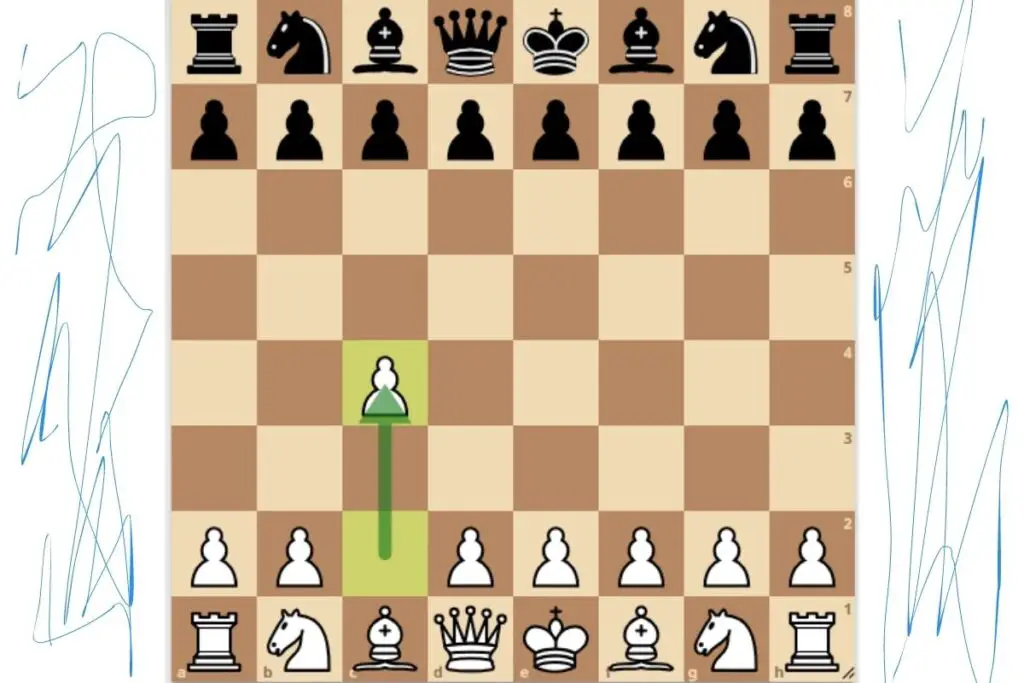The English Opening, initiated with the move 1.c4, holds the position as the fourth most popular opening move in the game of chess.
Opting for this move grants White the advantage of unrestricted queen movement while dissuading Black from countering with 1…d5. Furthermore, it guarantees that the c-pawn will not be obstructed by a knight on c3.
The resulting positions often bear resemblance to those arising from 1.d4 openings rather than 1.e4 openings, often leading to the subsequent move d4 being frequently played.
Although the English Opening lacks the same level of aggression as 1.e4 or 1.d4, it remains a formidable strategy for controlling the d5 square. It boasts high flexibility, effortlessly transitioning into other opening variations.
Black’s Responses
English Opening: Anglo-Indian Defence (1…Nf6)

With this move, Black maintains a flexible approach, leaving their options open. Following White’s d4 advancement, the game has the potential to transition into an Indian defense through transposition.
2.Nc3

White strengthens the attack on the d5 square while maintaining a flexible stance. In response, Black has several choices available.
Opting for 2…g6 sets the stage for a King’s Indian formation, presenting an intriguing option.
Alternatively, 2…e6 remains a viable move, although White can disrupt Black’s intentions of reaching a Nimzo-Indian or Queen’s Indian Defense setup by playing 3. e4, leading to the highly dynamic and tactical variations collectively referred to as the Mikenas Carls variation.
Black is advised to approach these variations with caution unless adequately prepared to confront them.
Another possibility is 2…e5, leading to the English Four Knights and the Bremen system.
2…g6

Black indicates their intention to pursue a King’s Indian Defense (KID) setup. In response, White has the option to assert dominance in the center and transition into a typical KID by playing 3. d4, or to maintain the course of the English Opening with 3. g3.
This decision by White to refrain from seizing central space grants them a degree of flexibility and tactical subtleties in return.
By choosing 3. g3, White reveals a strategic approach where they prioritize initial development and establish strong control over the center before advancing their central pawns.
This approach poses a challenge for Black to undermine the white center using conventional KID strategies, as White’s delayed pawn advancement makes it significantly more difficult for Black to dismantle them.
English Opening: 1…e5 (Option #2)
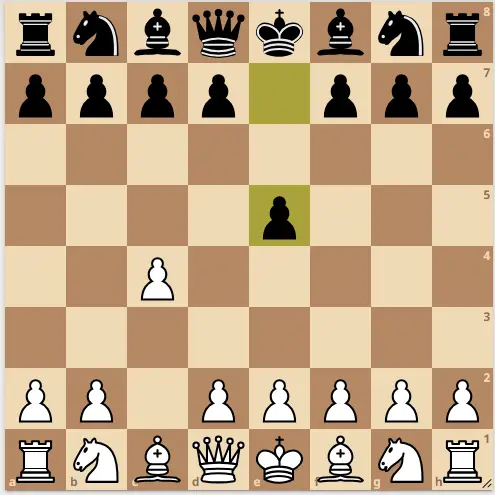
This particular move establishes a reversed Sicilian scenario, with the distinction that it is White’s turn to act. White’s objective of seeking an advantage typically leads to diverse positions. At this point, White has several choices available:
-
- Nc3: This is the customary move, following the standard development pattern.
-
- g3: Opting for this move opens up numerous possibilities for transposition into different openings.
-
- Nf3: This move can result in a reversed version of Alekhine’s Defense if Black responds with …e4, with the added option of cxd5 if Black attempts to advance the d-pawn.
-
- d4: Choosing this move relinquishes any advantage previously held by White.
2.Nc3
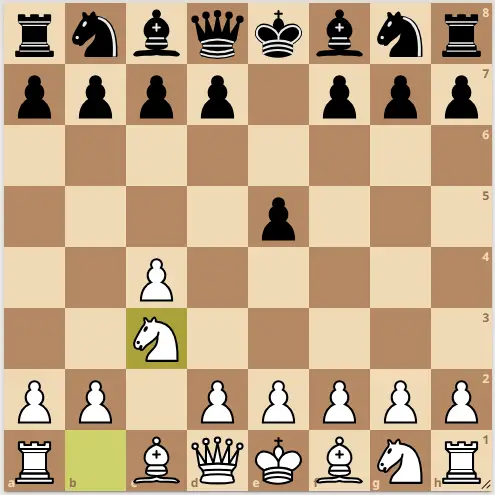
Nc3 serves as an immediate and effective means of strengthening the attack on d5, representing the standard second move in the independent lines of the English Opening.
This move offers further advantages by enabling 3.Nf3, although certain players opt for the Bremen System by playing 3.g3, preparing for 4.Bg2.
This strategic choice enhances control over d5 while preserving two favorable options for the development of the king’s knight: a conventional Nf3 or Ne2, the latter maintaining an open long diagonal and providing defense against potential pinning and knight exchanges.
The flexibility inherent in the English Opening extends to the black side as well, necessitating a decision on how to proceed following this move. While 2…Nf6 remains a versatile choice, offering some influence over d5, 2…Nc6 is also a viable alternative. This path leads to sharp variations where White gains the initiative on the queen-side with moves like e3, Nge2, d4, Rb1, and b4. In response, Black generates counterplay on the opposite wing by advancing their king-side pawns, presenting a threat that puts the white king in a precarious position.
2…Nf6
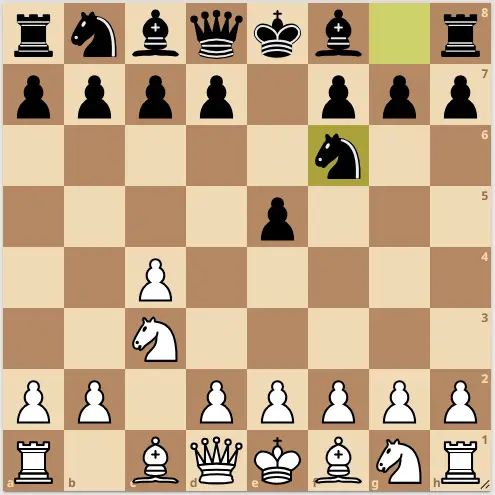
This position, attainable through the move sequence 1…e5/2.Nc3 Nf6, presents the opportunity for two significant variations in the English Opening, depending on White’s chosen development. The natural move of 3.Nf3 often leads to the English Four Knights variation, as Black typically defends their pawn with 3…Nc6.
In this scenario, White commonly proceeds to develop their bishop to g2 and castle kingside. Black possesses various options against this variation, including the strategic maneuver of pinning the knight on c3, aiming to advance the e5 pawn and create doubled pawns.
Alternatively, White can prioritize placing the bishop on g2 before determining how to develop the knight, known as the Bremen System. This approach offers the advantage of flexible knight development while simultaneously exerting control over the d5 square and exerting additional pressure on Black’s queen-side. In response, Black may opt to counter this pressure by advancing their pawn to c6.
3.g3
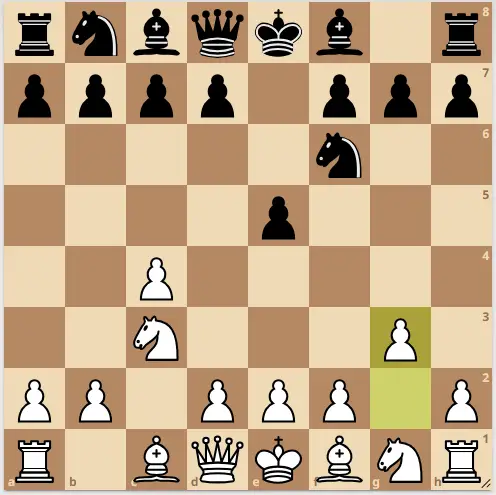
White strategically intends to develop their bishop along the long diagonal. This maneuver exerts significant pressure on the central light squares, particularly d5, as well as the opponent’s queen-side. However, this plan does come with certain drawbacks, as a king situated behind a fianchettoed bishop becomes vulnerable if the bishop is removed from the board.
Black now faces two viable options. One option is to immediately play d5, as delaying this move would allow White to achieve strong overprotection of the crucial central square through 4.Bg2. Another choice for Black, which introduces sharp dynamics, is to play 3…c6. Although this move blocks the knight from its optimal square, it allows Black to regain control over the d5 square and closes the long diagonal, limiting the influence of a bishop on g2.
Once Black successfully executes the move d5, their formidable center may pose challenges for White. However, the more developed player can employ hypermodern tactics, utilizing their c-pawn, knights, and fianchettoed bishop, to undermine and counteract the strength of Black’s centralized position.
Popular Continuations of the English Opening
- King’s english variation (e5)
- Anglo-Indian Defense (Nf6)
- Symmetrical Variation (c5)
- Agincourt Defense (e6)
- Anglo-Scandinavian Defense (d5)
- Great Snake Variation (g6)
- Caro-Kann Defense System (c6)
- d6
- b6
- Anglo Dutch Defense (f5)
- Anglo- Lithuanian Variation (Nc6)
- Jaenisch Gambit (b5)
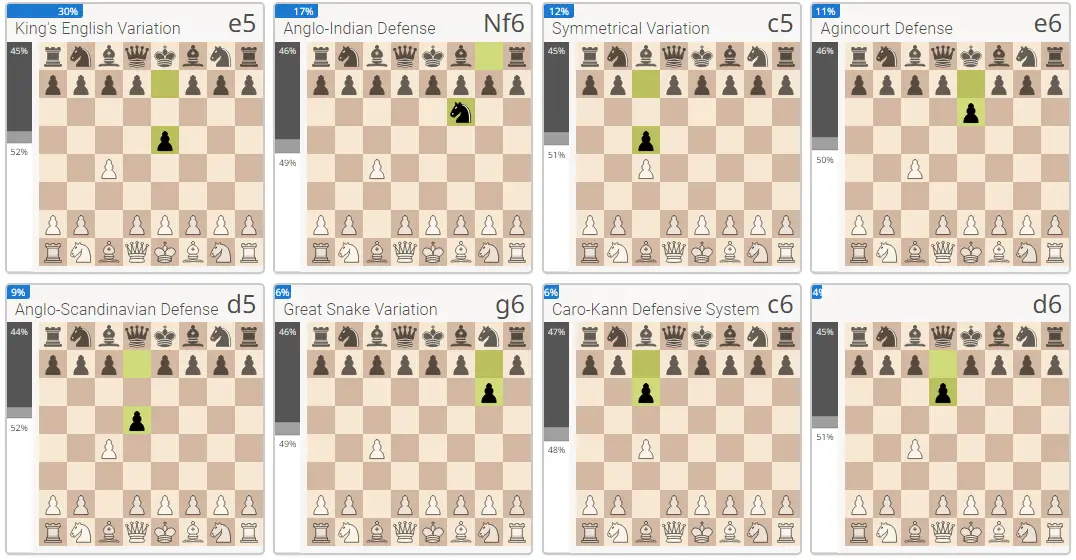

Popularity And Win Rate of the English Opening

According to Lichess database, the win rate for white with the English Opening is 51%, 45% for Black, while 4% of games end in a draw.
Is The English Opening Good?
The English Opening is widely considered to be a good and respectable opening in chess. It offers a unique strategic approach for White, focusing on control of the center and flexible piece development.
The opening’s flexibility allows for a variety of transpositions into different pawn structures and plans, providing opportunities for both tactical and positional play.
The English Opening has been employed by numerous world-class players, including former World Chess Champions such as Anatoly Karpov and Garry Kasparov, attesting to its effectiveness at the highest levels of the game.
However, the ultimate success of any opening depends on a player’s understanding, preparation, and ability to capitalize on its strengths while navigating its intricacies.
Final Verdict
In conclusion, the English Chess Opening offers players a rich and versatile strategic landscape. Its flexibility, transpositional possibilities, and emphasis on central control make it a formidable weapon in a player’s arsenal. By mastering the nuances of this opening, chess enthusiasts can unlock new dimensions of creativity, adaptability, and success on the board.

